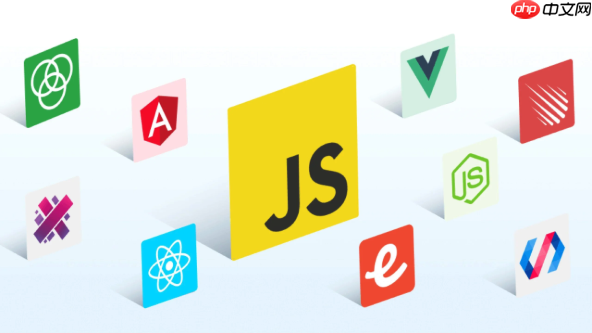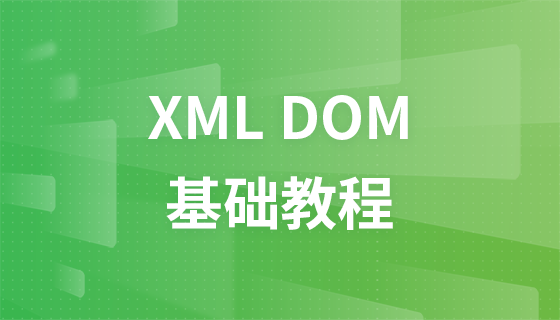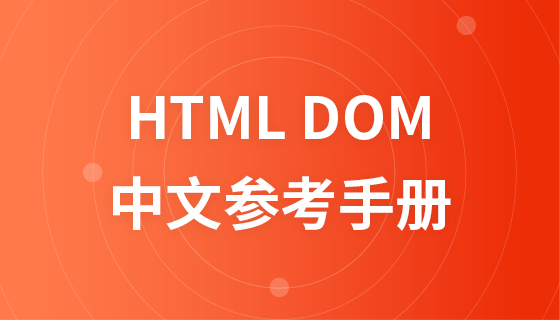答案:操作DOM元素尺寸和位置需掌握style属性、getBoundingClientRect、offset/client系列属性及getComputedStyle。通过element.style可直接设置宽高和定位,但仅限内联样式;获取真实几何信息推荐使用getBoundingClientRect(),返回相对于视口的精确坐标和尺寸;offsetWidth/offsetHeight获取包含边框的布局尺寸,clientWidth/clientHeight获取内容区尺寸;offsetLeft/offsetTop用于获取相对offsetParent的偏移;getComputedStyle可读取最终计算样式。动态调整时需注意position类型、单位添加、避免频繁重排重绘,优先使用transform提升动画性能。实现拖拽功能需监听mousedown、mousemove、mouseup事件,结合鼠标坐标与元素位置计算实时更新样式。

在JavaScript里,操作DOM元素的尺寸和位置,说白了,就是通过代码去读取或者修改页面上某个HTML元素的大小和它在页面中的坐标。这事儿听起来简单,但背后涉及到的属性和方法还真不少,而且不同的场景下,选择合适的工具能让你事半功倍,也能避免一些莫名其妙的布局问题。核心思路就是拿到元素的引用,然后通过它的
style
要改变或获取DOM元素的尺寸和位置,我们主要有几种途径:
1. 直接修改style
element.style.propertyName
const myElement = document.getElementById('myDiv');
// 设置宽度和高度
myElement.style.width = '200px';
myElement.style.height = '150px';
// 设置位置(需要元素有非static的position属性,如relative, absolute, fixed)
myElement.style.position = 'absolute'; // 或者 'relative', 'fixed'
myElement.style.left = '100px';
myElement.style.top = '50px';
// 也可以使用 transform 来移动,性能更好,尤其是在动画中
myElement.style.transform = 'translate(100px, 50px)';需要注意的点:
element.style
style
<style>
element.style
left
top
right
bottom
position
relative
absolute
fixed
sticky
static
'px'
'%'
'em'
2. 获取元素的计算样式和几何信息: 当你想知道一个元素当前在页面上的真实尺寸和位置时,有几个非常实用的方法和属性:
element.getBoundingClientRect()
DOMRect
left
top
right
bottom
width
height
const rect = myElement.getBoundingClientRect();
console.log('距离视口左侧:', rect.left);
console.log('距离视口顶部:', rect.top);
console.log('元素宽度:', rect.width); // 包含padding和border
console.log('元素高度:', rect.height); // 包含padding和border它的好处是,无论元素是定位的还是流式布局,都能拿到它在当前视口中的真实位置和尺寸,非常适合做元素的碰撞检测或者判断元素是否在可视区域内。
立即学习“Java免费学习笔记(深入)”;
element.offsetWidth
element.offsetHeight
console.log('元素总宽度 (offsetWidth):', myElement.offsetWidth);
console.log('元素总高度 (offsetHeight):', myElement.offsetHeight);element.clientWidth
element.clientHeight
console.log('元素内容加内边距宽度 (clientWidth):', myElement.clientWidth);
console.log('元素内容加内边距高度 (clientHeight):', myElement.clientHeight);element.offsetLeft
element.offsetTop
offsetParent
body
console.log('相对于offsetParent的左侧偏移:', myElement.offsetLeft);
console.log('相对于offsetParent的顶部偏移:', myElement.offsetTop);window.getComputedStyle(element)
margin-left
color
const computedStyle = window.getComputedStyle(myElement);
console.log('计算出的宽度:', computedStyle.width);
console.log('计算出的左边距:', computedStyle.marginLeft);理解这些属性和方法的差异,是高效操作DOM元素尺寸和位置的关键。有时候,我发现很多初学者会混淆
offsetWidth
getBoundingClientRect().width
getBoundingClientRect
offsetWidth
在前端开发中,我们经常需要精确地知道或控制DOM元素在页面上的“身形”和“站位”。这不仅仅是为了美观,更是实现交互、布局调整甚至动画效果的基础。JavaScript为此提供了一套丰富的API,但它们各自有适用场景和一些细微差别,理解这些是避免“布局错乱”和“动画卡顿”的关键。
1. element.style
element.style
CSSStyleDeclaration
width
height
left
top
transform
const box = document.getElementById('myBox');
box.style.width = '300px'; // 设置宽度
box.style.backgroundColor = 'lightblue'; // 设置背景色
console.log(box.style.width); // 读取内联样式宽度我个人的看法是,element.style
style
element.style
<style>
element.style
2. getBoundingClientRect()
DOMRect
left
top
right
bottom
width
height
const item = document.getElementById('myItem');
const rect = item.getBoundingClientRect();
console.log(`元素距离视口左侧: ${rect.left}px`);
console.log(`元素距离视口顶部: ${rect.top}px`);
console.log(`元素宽度 (含padding和border): ${rect.width}px`);
console.log(`元素高度 (含padding和border): ${rect.height}px`);我觉得getBoundingClientRect()
3. offsetWidth
offsetHeight
clientWidth
clientHeight
offsetWidth
offsetHeight
clientWidth
clientHeight
const container = document.getElementById('myContainer');
console.log(`容器总宽度 (offsetWidth): ${container.offsetWidth}px`);
console.log(`容器内部宽度 (clientWidth): ${container.clientWidth}px`);我通常用offsetWidth
offsetHeight
clientWidth
clientHeight
getBoundingClientRect().width/height
4. offsetLeft
offsetTop
offsetParent
offsetParent
body
const child = document.getElementById('childElement');
console.log(`相对于offsetParent的左侧偏移: ${child.offsetLeft}px`);
console.log(`相对于offsetParent的顶部偏移: ${child.offsetTop}px`);这个组合在处理嵌套定位元素时特别有用。比如,你有一个绝对定位的子元素,想知道它相对于其relative
offsetLeft
offsetTop
offsetParent
static
5. window.getComputedStyle(element)
const paragraph = document.getElementById('myParagraph');
const computedStyle = window.getComputedStyle(paragraph);
console.log(`计算出的字体大小: ${computedStyle.fontSize}`);
console.log(`计算出的边距: ${computedStyle.margin}`);当我需要获取一个元素当前在浏览器中实际生效的某个CSS属性值时,比如它的margin
padding
color
display
getComputedStyle
总的来说,
element.style
getBoundingClientRect()
offsetWidth
offsetHeight
offsetLeft
offsetTop
offsetParent
getComputedStyle()
动态调整DOM元素位置,这在前端交互中太常见了,比如拖拽、弹窗居中、滚动动画等等。但如果不多加注意,很容易掉进一些“坑”里,导致元素表现不如预期,甚至引发性能问题。
1. position
element.style.left
element.style.top
position
static
我的经验是,要使用left
top
right
bottom
position
relative
absolute
fixed
sticky
relative
absolute
static
fixed
sticky
relative
fixed
我记得刚开始学的时候,就老是搞不清楚为什么
left: 100px
position
2. 忘记添加单位: 在JavaScript中直接设置
style
'px'
'%'
'em'
// 错误示例:不会生效 myElement.style.left = 100; // 正确示例: myElement.style.left = '100px';
虽然有些属性(比如
zIndex
3. 频繁的DOM操作与性能问题(Reflow/Repaint): 每次修改DOM元素的几何属性(如
width
height
left
top
我的建议是:
transform
transform
translate()
scale()
requestAnimationFrame
requestAnimationFrame
// 更好的动画方式
let currentX = 0;
function animateElement() {
currentX += 5;
myElement.style.transform = `translateX(${currentX}px)`;
if (currentX < 200) {
requestAnimationFrame(animateElement);
}
}
requestAnimationFrame(animateElement);4. 坐标系的理解偏差:getBoundingClientRect
offsetLeft/offsetTop
getBoundingClientRect()
offsetLeft
offsetTop
offsetParent
这两个概念很容易混淆。如果你想知道元素相对于整个文档的坐标,你需要将
getBoundingClientRect()
top
left
window.scrollY
window.scrollX
offsetParent
我通常会这样思考:如果我关心元素在屏幕上的绝对位置,getBoundingClientRect()
offsetParent
offsetLeft
offsetTop
5. 避免使用document.body.scrollTop
document.documentElement.scrollTop
window.scrollY
window.pageXOffset
document.documentElement.scrollTop
document.documentElement.scrollLeft
document.body.scrollTop
document.body.scrollLeft
为了兼容性,我通常会使用一个统一的写法来获取滚动位置:
const scrollTop = window.pageYOffset || document.documentElement.scrollTop || document.body.scrollTop; const scrollLeft = window.pageXOffset || document.documentElement.scrollLeft || document.body.scrollLeft;
这些看似细节的问题,在实际开发中往往是导致bug的元凶。多留心这些“陷阱”,能让你的DOM操作更加稳健。
实现DOM元素的拖拽功能,是前端交互中一个非常经典的案例,它完美地结合了事件监听、位置计算和DOM样式操作。核心思路就是:当鼠标按下(
mousedown
mousemove
mouseup
基本原理:
mousedown
mousemove
mouseup
mousemove
left
top
mouseup
mousemove
mouseup
实现步骤与代码示例:
我们来创建一个简单的可拖拽
div
HTML 结构:
<style>
#draggable {
width: 100px;
height: 100px;
background-color: #4CAF50;
position: absolute; /* 必须是定位元素才能使用left/top */
cursor: grab; /* 提示用户可以拖拽 */
border-radius: 8px;
display: flex;
align-items: center;
justify-content: center;
color: white;
font-weight: bold;
user-select: none; /* 防止拖拽时选中文字 */
}
</style>
<div id="draggable">拖我!</div>JavaScript 代码:
document.addEventListener('DOMContentLoaded', () => {
const draggable = document.getElementById('draggable');
let isDragging = false; // 标记是否正在拖拽
let startX, startY; // 鼠标按下时的X, Y坐标
let initialLeft, initialTop; // 元素初始的left, top值
// 鼠标按下事件:开始拖拽
draggable.addEventListener('mousedown', (e) => {
// 只有左键点击才开始拖拽 (e.button === 0 代表左键)
if (e.button !== 0) return;
isDragging = true;
draggable.style.cursor = 'grabbing'; // 改变鼠标样式表示正在拖拽
// 记录鼠标按下时的页面坐标
startX = e.clientX;
startY = e.clientY;
// 获取元素当前的left和top值
// 注意:这里需要将CSS的left/top值(字符串,如"100px")转换为数字
initialLeft = parseFloat(draggable.style.left || 0);
initialTop = parseFloat(draggable.style.top || 0);
// 阻止默认的文本选择行为,这在拖拽时很重要
e.preventDefault();
// 鼠标移动和抬起事件需要监听在document上,
// 这样即使鼠标移出了draggable元素,拖拽也能继续以上就是怎么使用JavaScript操作DOM元素尺寸与位置?的详细内容,更多请关注php中文网其它相关文章!

每个人都需要一台速度更快、更稳定的 PC。随着时间的推移,垃圾文件、旧注册表数据和不必要的后台进程会占用资源并降低性能。幸运的是,许多工具可以让 Windows 保持平稳运行。




Copyright 2014-2025 https://www.php.cn/ All Rights Reserved | php.cn | 湘ICP备2023035733号